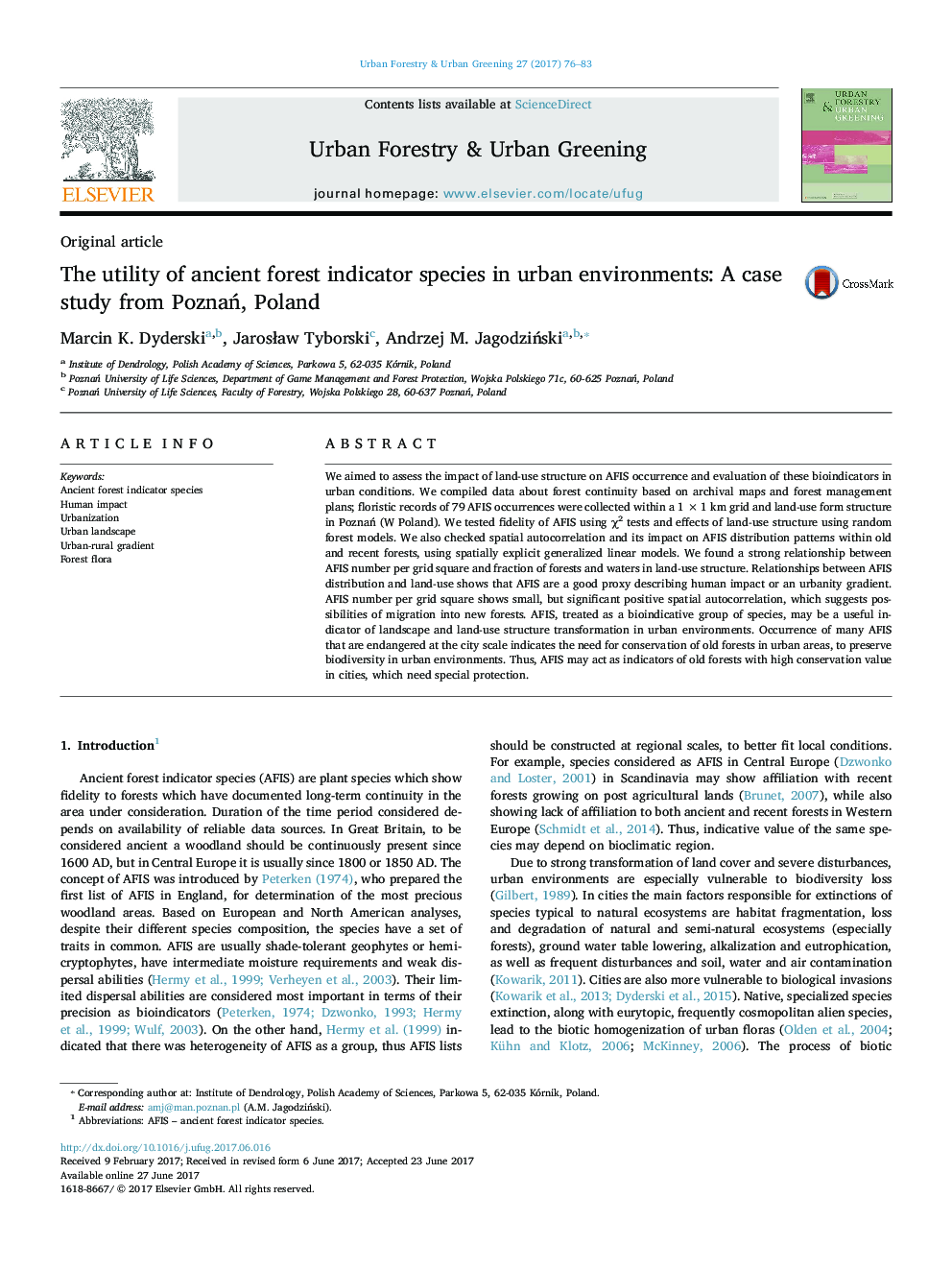| Article ID | Journal | Published Year | Pages | File Type |
|---|---|---|---|---|
| 6461701 | Urban Forestry & Urban Greening | 2017 | 8 Pages |
â¢Most of the country-scale AFIS were good indicators of old forest at the city-scale.â¢AFIS may be a useful indicator of landscape and land-use structure transformation.â¢We confirmed AFIS applicability in urban conditions in a wider ecological context.â¢AFIS are good indicators of high conservation value forests in cities.
We aimed to assess the impact of land-use structure on AFIS occurrence and evaluation of these bioindicators in urban conditions. We compiled data about forest continuity based on archival maps and forest management plans; floristic records of 79 AFIS occurrences were collected within a 1Â ÃÂ 1Â km grid and land-use form structure in PoznaÅ (W Poland). We tested fidelity of AFIS using Ï2 tests and effects of land-use structure using random forest models. We also checked spatial autocorrelation and its impact on AFIS distribution patterns within old and recent forests, using spatially explicit generalized linear models. We found a strong relationship between AFIS number per grid square and fraction of forests and waters in land-use structure. Relationships between AFIS distribution and land-use shows that AFIS are a good proxy describing human impact or an urbanity gradient. AFIS number per grid square shows small, but significant positive spatial autocorrelation, which suggests possibilities of migration into new forests. AFIS, treated as a bioindicative group of species, may be a useful indicator of landscape and land-use structure transformation in urban environments. Occurrence of many AFIS that are endangered at the city scale indicates the need for conservation of old forests in urban areas, to preserve biodiversity in urban environments. Thus, AFIS may act as indicators of old forests with high conservation value in cities, which need special protection.
